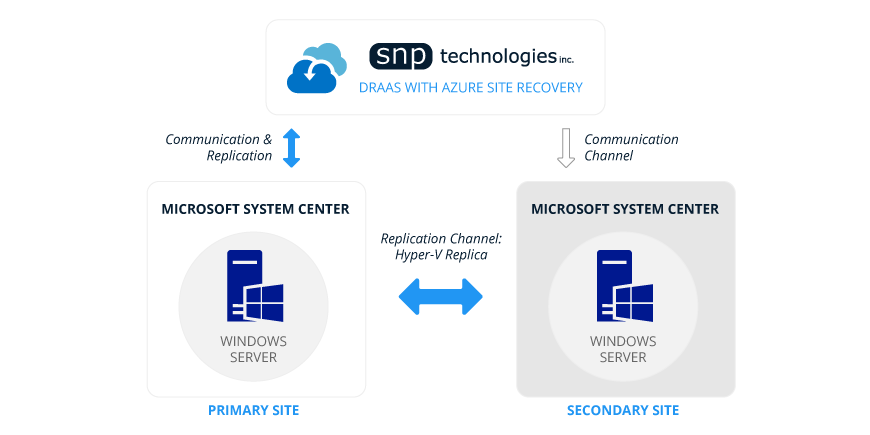
What is Azure Site Recovery?
Azure Site Recovery, an underlying technology of Operations Management Suite, helps protect the critical applications running in your datacenter with flexible recovery plans and low RPOs (recovery point objectives)/RTOs (recovery time objectives). As an organization, you need to adopt a business continuity and disaster recovery (BCDR) strategy that keeps your data safe and your apps and workloads up and running when planned and unplanned outages occur.
How Azure Recovery Services contribute to your BCDR strategy:
- Site Recovery service—Site Recovery keeps business apps and workloads running during outages by replicating workloads running on physical and virtual machines (VMs) from a primary site to a secondary location. When an outage occurs at your primary site, you failover to a secondary location and access apps from there. After the primary location is running again, you can automatically fail back to it.
- Backup service—The Azure Backup service keeps your data safe and recoverable by backing it up to Azure.
Site Recovery can manage replication for:
- Azure VMs replicating between Azure regions.
- On-premises VMs and physical servers replicating to Azure, or to a secondary site.
What does Azure Site Recovery Provide?
Simple BCDR solution—Using Site Recovery, you can set up and manage replication, failover and failback from a single location in the Azure portal.
Azure VM replication—You can set up disaster recovery of Azure VMs from a primary region to a secondary region.
On-premises VM replication—You can replicate on-premises VMs and physical servers to Azure or to a secondary on-premises datacenter. Replication to Azure eliminates the cost and complexity of maintaining two datacenters.
Workload replication—Replicate any workload running on supported Azure VMs, on-premises Hyper-V and VMware VMs and Windows/Linux physical servers.
Data resilience—Site recovery orchestrates replication without intercepting application data. When you replicate to Azure, data is stored in Azure. When a failover occurs, Azure VMs are created based on the replicated data.
RTO and RPO targets—Keep recovery time objectives (RTOs) and recovery point objectives (RPOs) within organizational limits. Site Recovery provides continuous replication of Azure VMs and VMware VMs with replication frequency as low as 30 seconds for Hyper-V.
Ensure app consistency after a failover—You can replicate systems using recovery points with application-consistent snapshots. These snapshots capture disk data, all in-memory data, and all transactions in process.
Testing without disruption—You can easily run disaster recovery drills without affecting ongoing replication.
Flexible failovers—You can run planned failovers for expected outages with zero data loss, or unplanned failovers (following unexpected disasters) with minimal data loss (depending on replication frequency). And you can easily failback to your primary site when it's available again.
Customized recovery plans—Using recovery plans, you can customize and sequence the failover and recovery of multi-tier applications running on multiple VMs by grouping machines together in a recovery plan and optionally add scripts and manual actions. Recovery plans can be integrated with Azure automation runbooks.
Azure automation integration—A rich Azure automation library provides production-ready, application-specific scripts that can be downloaded and integrated with Site Recovery.
For more details or information on how Azure Site Recovery can be a part of your disaster recovery strategy, contact the SNP experts.





